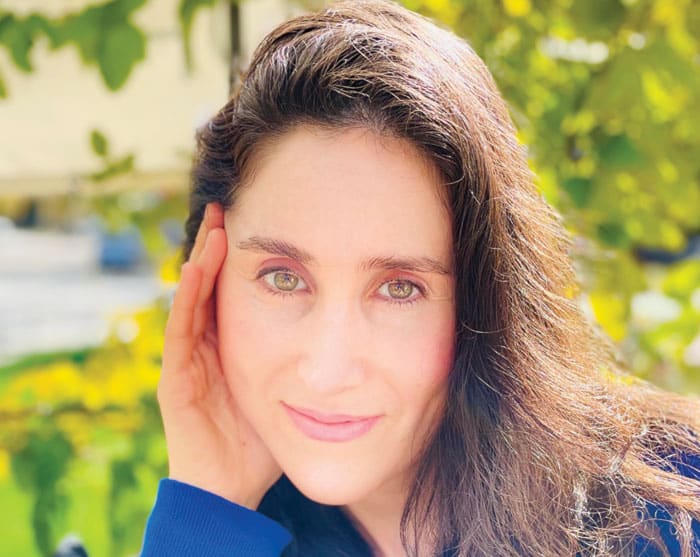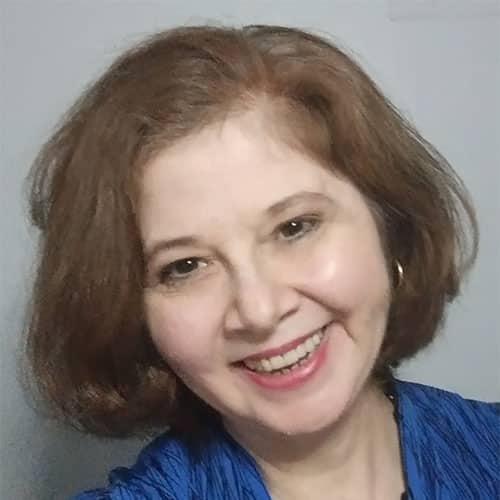 Deborah Stokol
Photo by Rana Hakhamimi Levin
Deborah Stokol
Photo by Rana Hakhamimi Levin “The High Holy Days are such an important, spiritual, traditional and cultural time,” musician Deborah Stokol told the Journal. “It’s a time of reflection and to honor the past while taking stock of who you are and building a future you want to live in and be a better, more moral part of each day.”
Stokol, who is a composer, performer and storyteller, as well as an educator, decided to take a sabbatical from teaching to invest in her future … and to spend more time with what speaks most to her heart: music and composition.
“I love music intrinsically as an absolute thing, separate from teaching,” she said. “So, while it is related to my teaching, it precedes it, and it is still going separately, I want to keep making more Jewish music. I feel like I’m only starting.”
Stokol calls her style of the music “medieval jazz.” It’s a fusion of different types of music styles including jazz, classical, folk, Jewish (Middle-Eastern, Sephardic and Eastern-European) and Vaudevillian.
Since the start of the pandemic, she has recorded three self-produced albums, an EP of solo piano pieces and 41 singles (covers and originals). Stokol’s second album, “Bard,” was about literature, sacred text and the oral tradition. The companion album, “Old Wives’ Tales,” which has 18 original songs (for chai), came out over the summer. They can be downloaded at https://www.deborahstokol.com/shop.
“The album explores themes of empowerment, stories of women from myth and legend, mortality, time and storytelling’s relationship to them all, Judaism and femininity, narrative and love,” she said.
Stokol composed, wrote, sang, produced, mixed, mastered, and played harp, mandolin, piano, drum and guitar on her albums. She also worked with musicians from around the world. She also does the graphic designing.
“On one level, the music that I sing to a Jewish prayer or text in Hebrew, secular or otherwise, coheres with those ideas because it’s intrinsically Jewish,” Stokol said.
On a deeper level, Stokol said her music seeks to honor her heritage. For instance, two of her songs are interpretations of the “Avinu Malkeinu” and another is her melody to the words of the “Lecha Dodi.” She put music to the words of Song of Songs, the Book of Ruth and other sacred texts.
Stokol’s “Tiny Joys” puts her music to the words of Hebrew-language poet Ra’hel Bluwstein. “I am singing it as a female bard,” she said. “Jewish women have always been such a fundamental part of the tradition, but only recently do I feel like we are beginning to acknowledge that in a widespread and public way.”
Judaism has always been an important part of Stokol’s life. Her mother, an Argentinian Jew, and her dad, a South African Jew, met on the East Coast of the United States before marrying and moving out west. Stokol went to Temple Emanuel Day School until she was 12. “I was completely immersed in a Jewish life,”she said.
Her relationship with music goes back to childhood. She started playing piano at the age of six, and by the time she was 11, she wrote music to go with the poems and stories she read.
She grew up speaking Spanish at home, double-majored in English and music at UC Berkeley and earned a graduate degree in Journalism from University of Southern California. She worked as a reporter for four years before becoming a full-time high school English, creative writing and journalism teacher for 12 years.
Whenever they would study a passage where Stokol had written music, she thought, “Most people do like music,” she said. “Let me bring it in and see if it’s another point of entry for students who don’t necessarily resonate with the text.”
Stokol used her passion for music as a way to inspire her students. “I would bring in my harp and play songs I had written to or about passages from the text, so students could experience the reading in different ways,” she said.
She would also ask them to choose a passage and make their own projects. “They could either do stick figures, a journal entry or a dance — it didn’t have to be music,” she said. “They don’t have to be artists. I think when people take ownership of anything … it takes on a whole new importance.”
The music Stokol sings to and about is often in the bardic tradition: “The Iliad,” “The Odyssey,” “Beowulf,” “Gilgamesh.” The epic stories consider themes of life, death, memory and the power of storytelling.
“The High Holy Days are about the cycle of death and rebirth, of endings and beginnings.”
– Deborah Stokol
“The High Holy Days are about the cycle of death and rebirth, of endings and beginnings,” she said. “There are the ‘tiny joys’ of honey cake, apples and honey and pomegranate seeds, of course, but there’s the greater understanding that you are part of a family, community and history. By continuing those things, they remain.”























 More news and opinions than at a Shabbat dinner, right in your inbox.
More news and opinions than at a Shabbat dinner, right in your inbox.